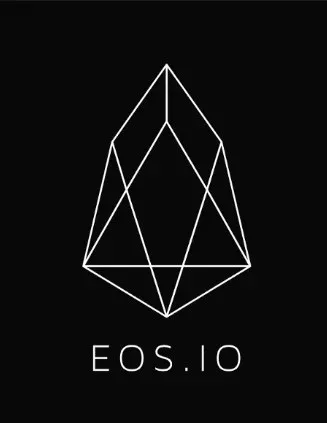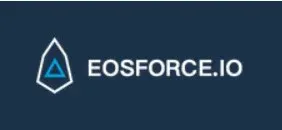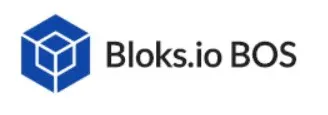https://eos.discussions.app
#
There was a time in which there was nothing but darkness and an abyss of randomly interconnected nodes, wherein resided most hideous beings which were produced of a two-fold principle. They were called fiat and bankers were the ones to shift them from one place to another, making a pile of cash in the process.

Then Satoshi Nakamoto came and said: "Let there be a blockchain" and thus Bitcoin appeared. Next there was the Namecoin, then came Litecoin and so on. All of them following the Proof of Work principle.
Some time has passed and then Vitalik Buterin came with the gift of Ethereum, but this was not enough for those who wanted to organize this chaos a little bit more so Graphene was invented, and the human race was gifted by Dan Larrimer with Bitshares and Steem following Proof of Stake logic with delegation chipped in. But those were not perfect either so eventually, on the 1st June 2018 EOS emerged from primordial soup infested with crawling blocks.

That's more or less the story of EOS genesis, but the main-net launch was just a beginning and today there is a whole bunch of EOS-like chains and they seem to sprout out of nowhere and proliferate like rabbits…

EOS proper - the mother chain, went live on 1st June 2018 and today it is one of the most active chains in the whole cryptocurrency ecosystem. The aim of the platform is to provide decentralized application hosting - in practice it behaves like a dispersed, decentralized computer shared between token holders where the number of tokens staked defines the share of system resources available to any given account.

There are three components: RAM, CPU and NET. The first one has to be purchased with EOSIO native tokens, while CPU and NET share depends on the number of tokens staked for each of them. Tokens may also be used for voting in order to select block producers and decide the future of the whole chain. There are no outright transaction fees for transferring tokens. All users are bound by EOS Constitution - a multi-party contract entered into by members of the EOS ecosystem by virtue of their use of the platform.
The whole system is organized around an account, not the address like in BTC or ETH. This account holds all information about tokens held and provides access to the resources of something which for all practical purposes is a decentralized computer.
By market cap it is the 5th chain with a circulation of around 1 billion EOS tokens. There is 5% inflation tax incorporated into the system which is used mainly to reward block producers i.e. those who maintain the infrastructure powering EOS network.
But as I said earlier, EOS was just the beginning and the whole ecosystem of EOS-like chains is constantly expanding. Some of those sister-chains are clones based on EOS genesis snapshot, same were set up independently, with their native tokens issued originally on ETH (so same as EOS), and there are also those which are based on later snapshots, with no relation to Genesis accounts and balances.
So let's explore those sister-, side-, parallel-, whatever - there is no real encyclopedic definition so far so let’s stick with the term “sister chains”…

For all I know the first sister chain appeared very soon after EOS genesis, like the end of June 2018 - it is marketed as EOS Force.
EOS Force - Originally based on EOS genesis snapshot so technically all those who held EOS at the genesis were rewarded with EOS Force tokens 1:1. But being of Asian origin, this chain remained virtually unknown in the West until mid-December 2018 when some of the Western genesis holders found out that they were dispossessed - the "community" of EOS Force voted to freeze 80% of genesis balances unclaimed by mid-December 2018. This was done in order to protect existing holders to the obvious detriment of those who did not claim until then. And they did not claim because the chain was virtually unknown, so it looks like they've decided to get extra exposure by confiscating 80% of tokens.
I have to say that this was a very effective way to gain much-needed attention. I just have my doubts if this was the right kind of attention. But the fact is that since then EOS Force is much better known in the West ;-)
The whole thing works more or less like EOS proper, there are accounts, there is voting for block producers etc. The key differences? Well, apart from the fact that many holders got separated from 80% of their holdings, there is no RAM, CPU and NET, transactions are not free, but for each movement small fees are being charged, the inflation rate is higher than in EOS proper, and if you vote for block producer with your tokens then you get a share of producers rewards, so there is an open vote buying competition among block producers. Another difference is practical lack of any meaningful usability - there are no dapps to speak of, the block explorer is very simple (or maybe I should say primitive) and the number of ways to interact with the chain is very limited - you can transfer tokens, vote for producers and claim your rewards. There is nothing else really - anyway, nothing I could find. But maybe there is something I am not aware of - after all this is an Asian chain so they might have some special applications suited to local tastes. Actually, they list some dapps here https://dapp.eosforce.io/#/en but even an English site is in Chinese, which vastly improves the user experience 😂
The project's site: https://www.eosforce.io/
EOS Force block explorer & web wallet:
https://explorer.eosforce.io/#/en (Scatter required)
EOS Force Telegram site: https://web.telegram.org/#/im?p=@eosforce_en (conversations in English are mostly about Western holders being pissed off with losing 80% of their genesis tokens, and asking about the chances to get them back. If there are any answers then they go along “for the good of the community” lines, and if you actually read between those lines then the answer is very clear: “you are not getting them back”. The rest, including some important announcements, is mostly in Chinese.
On their site, there is this statement: “What improvements did EOS FORCE implement?
And one of the answers: …. “We will remove some unnecessary functionalities during the mainnet launch, to ensure the stability of the network.”
So they removed 80% of voting power from Western token holders as an unnecessary functionality. I have to say that this approach is sort of revolutionary 😛
Overall evaluation of the future potential: Low to Very low.
Hm, I don’t cross them out but for the time being, but I don’t see any point in investing any time or money in this project. I have some tokens, voted with them for profit and will be watching what’s going on. But if they don’t deliver something tangible soon then this project will fail miserably.
Ah, the token has some limited liquidity - it is listed on some DEX’es like https://akdex.io/trade/EOSC_EOS where you can trade it against EOS. There are also sub-tokens, some even listed but their function is unknown to me.

TELOS - historically speaking it’s the second EOS sibling, after EOS Force. Based on EOS Genesis but they made clear that they are going for more even token distribution so they’ve decided to cut out whales from the picture and capped 1:1 airdrop at 40 000 TLOS. This means that it is the most democratic chain so far. Another interesting thing they have done was the way they have dealt with RAM speculation - there was a special RAM pool created which was to be activated to stop the unreasonable RAM price increase seen in case of EOS around the launch.
The rest is more or less the same as in EOS - there are accounts, with RAM, CPU and NET, no transaction fees, very short confirmation time, there is voting for block-producers, vote buying is a big No! No!.
This chain is also quite strong on governance and arbitration - both are available in vastly improved form.
This brand new ecosystem is very young but it is already booming with dapps and developments. Of course, they started with gambling dapps but there are already a few airdrops in the pipeline and they have started to build their own version of DAC. They’ve even created their own account key management app/wallet. sQRL is a TELOS native equivalent of Scatter, and may be used instead of Scatter.
From the perspective of dapp developer, Telos is much cheaper - RAM price speculation is strongly discouraged, resources are more abundant and deployment of either open source or proprietary contracts is allowed. Also, onboarding is easier as Telos Foundation plans to give away for free 1 million Telos accounts. The free account may be claimed directly from sQRL i.e. Telos native wallet.
Project’s site: https://telosfoundation.io/ (very informative so worth checking out)
Block explorer: https://telos.eosx.io/
Telos stats: https://telostracker.io/monitor
Web interface: https://portal.telosgermany.io/
Liquidity: very decent I would say:
https://akdex.io/trade/TLOS_EOS or https://eosex.com/#/exchange/TLOSEOS
They have made the first “official” network snapshot at the block number 6 000 000 but there is no guarantee that this one will be used for all coming airdrops, as they plan to release new snapshots at fortnightly intervals and it is really up to the developer of any dapp to use any of those snapshots as he sees fit.
Overall evaluation of the future potential: High to Very High.
I have to admit, it’s my favourite chain so far. They are well organized, got solid backing, they communicate with the community and they stick to their word, unlike some other projects I am writing about. With free accounts giveaway, the onboarding of new users is much easier than on EOS, and the whole chain is much more developer friendly too.
And in my opinion, the fact that there are no whales is a big plus - I know, that many would disagree with this statement, but from what I have been observing in other chains, too much wealth concentration is never good for the whole economy especially in the long run.
Decentralization in DPOS means that tokens have to be evenly distributed - otherwise you get the case of Steem where ~ 100-200 people are in practice controlling the whole system and do what they want, sucking out any real value in the process.

The next one is WORBLI, advertised as the world's first financial district on the blockchain, offering “a user-friendly financial services ecosystem where users, developers, and businesses can access a huge range of powerful applications with limitless possibilities.”
It is supposed to serve as a platform to run financial dapps which require Know Your Client and Anti Money Laundering compliance.
The project appeared on the market sometime in the Autumn of 2018, offering EOS holders free tokens at 1:1 ratio on the basis of September 7, 2018 snapshot. The network went live on November 1, 2018.
Initially, the “share drop” as they called it was supposed to last until June, then the deadline for claiming was cut to May and eventually in early February 2019 they have announced that it will be closed within next couple days. So another chain going back on their promise. Not a very good start in my opinion.
They follow more or less EOS logic so there are accounts with RAM, CPU and NET. But the biggest difference is governance - in reality, this is a private chain strictly controlled by one entity and users have practically no say in running the chain’s affairs. Also, the resource allocation model is unclear - they said that they would provide RAM free of charge to developers, but I could not find out much about NET or CPU allocation. With circulation exceeding 2.5 billion, only 35 million tokens are staked at present so it looks like there is no incentive to stake whatsoever. This may actually change in the future if the model of resource economy described in their recent official release published on Medium is implemented. Summary of this official release is as follows: staking/locking will provide yield up to 4% depending on the total network utilization + additional fees from leasing, so the grand total can theoretically exceed 12%.
Accounts are not freely available, there seems to be a limit of one account per person, and in order to get the account one has to pass burdensome KYC process outsourced to an external provider.
For that reason only something like 3% of the “share drop” had been claimed as users were not willing to part with their personal data for bunch of fairly worthless tokens, especially that those were already listed on some exchanges so one could get them without going through KYC, as long as the buyer was prepared to keep purchased tokens on the exchange.
Apparently unclaimed WORBLI were burned, but it is not clear what’s going to happen with 100 million allocated to b1, as those (according to WORBLI representative statement) will not be burned.
This KYC idea had been heavily contested by many. The explanation provided by the team was that in order to offer financial services the chain has to be KYC compliant, and for that reason KYC is mandatory. On the surface this argument makes sense but the fact is that although this KYC process was very bureaucratic and slow, it doesn't seem to guarantee actual compliance unless we are talking about token compliance.
First of all the scope of compliance is very different in different jurisdictions and I doubt that let’s say US financial institution would accept at the face value KYC run by an entity registered in Singapore (looks like Worbli Foundation is registered there), which on the top of that had been outsourced to an external company. Then, after passing this KYC circus, we get an account which is controlled by a pair of keys. And those keys can be passed to any third party, which in turn would be able to operate the account. This, in my opinion, invalidates the KYC (because final beneficiary might be just anybody with right keys) unless the key owner is not really controlling the account.
So either we have token KYC with token compliance and an account with all features typical for bearer instruments (like in case of all other cryptos where key = total, undisputable and unchallengeable control) or we have an account which is not controlled by the end user, although he might think otherwise.
Both scenarios have quite unpleasant implications. Ah, and keep in mind that this KYC of theirs will permanently link your EOS Genesis account with your identity, which for some might create a future tax liability nightmare. IMHO terms like “KYC” and “compliant” when put next to the term “blockchain” create an obvious cognitive dissonance.
There is also an issue with WORBLI’s Team communication policy - the information they provide is very vague, there are a lot of statements which are unverifiable for the time being and the whole broadcast is dominated by sales pitch and hype.
To make the long story short - it is private blockchain, strictly controlled by a single entity so there is no decentralization whatsoever and for all I know any account can be blocked or confiscated just because somebody says so (be it a court, bailiff or Worbli Foundation management).
Overall evaluation of the future potential: Medium.
The fact is that it's very difficult to evaluate actual potential because this is not a blockchain as we know. There is not much information (I mean facts and figures, not the hype), everything seems to be secret and/or covered by some NDA’ses. There are supposedly big deals in the pipeline but everything is shrouded in a veil of secrecy. Might work for some though, but when you take away an absolute account control from the user, then you get just normal financial services provider who just happens to use the distributed ledger to store clients data. Not really my cup of tea.
Project site: https://worbli.io/
Block explorer: https://worbli.bloks.io/chain
Telegram channel: https://web.telegram.org/#/im?p=@worblicommunity

And the newest kid on the block - BOS or Business Operating System.
In principle follows EOS logic, so as in most EOS sister chains there are accounts with RAM, CPU and NET. They took a snapshot of all main-net EOS accounts at 1 January 2019 and created accounts on BOS chain with same keys but different account names and dropped 1 BOS for each 20 EOS held on the main-net. Accounts with some EOS but below a certain threshold got 0.5 BOS flat drop (plus 0.2 staked equally between CPU and NET).
So if you had an EOS account with non-zero balance as of January 1, 2019 then you have some BOS on the corresponding account created on BOS chain, which can be claimed with your EOS account keys.
According to project site: “The initial circulation of BOS is 1 billion, 100 million for ecological airdrops (50 million direct airdrops to the EOS main network account, 50 million airdrops based on DApp and node transactions in the chain), 100 million strategic partner funds, for Project investment and BOS operation on the BOS chain, 400 million ecological incentives, subsidies for payment and BOS transactions generated in the BOS chain, 200 million incentives for founding teams, unlocked in 4 years, private equity in 200 million, divided into four phases…”
The tech side is not very different from other projects but they seem to be focused on interchain communication, and just recently released ICT or inter-chain transfers. This is something really innovative although for the time being it seems that ICT’s work one way - I tried it and after sending BOS to EOS I was unable to send it back. Still, if improved, this would be a revolutionary feature.
The cons: skewed distribution of tokens (with like 80% of them being controlled by BOS developers). So, for now, it is also a private and highly centralized chain. But at least they don’t change the rules at 24 hours notice (like WORBLI) and as far as I know there is no deadline to claim an account, so hopefully no tokens would mysteriously disappear (like EOS Force) just because somebody would get an idea that this is beneficial for him, pardon, I meant “the community” of course.
This chain has also a very distinct Far Eastern flavour - most users appear to be from that part of the world, and a lot of information is available in Chinese only.
Despite the fact that this is the youngest creation, there are already dapps running on this network, and some airdrops had been executed. One of them, MIx BOS System, was done by a project focusing on anonymization of token transfers - another interesting feature not present on other EOS-like chains.
My evaluation: Medium to High potential. They may be centralized as far as token concentration goes but they seem to be developing new things pretty fast and so far they stick to their word. The only problem for Westerners may be the fact that this chain is very strongly focused on Chinese users.
Project site: https://boscore.io/en/index.html
Block explorer: https://bos.eosx.io/
BOS Telegram channel: https://web.telegram.org/#/im?p=@boscorecommunity
I just hope you didn’t get bored by now because that’s not all folks 😄 I said already that them blockchains are proliferating like rabbits, didn't I? So those four listed above are just the most prominent ones but there are other EOS-like chains. Some are operational, some are just being tested. And it is very likely that there is more to come.
Those I know of:
ENU - https://enumivo.org/ social justice chain, operational, has a distinct token, airdrop was performed as ERC20 so no benefits for EOS genesis account holders.
UOS - https://u.community/ chain built around the proof of engagement concept with focus on social media. Runs as testnet, some sort of airdrop is planned with the mainnet going live around the end of 1st Q
Meet.One - https://meet.one and the white paper is here: https://github.com/meet-one/sidechain/blob/master/technical-white-paper-EN.md Went live few days ago. There was a drop to EOS account holders.
EvolutionOS - https://www.evolutionos.com/ They plan to start their own chain. They did have an airdrop but on ETH and the token is still in ERC20 form. The project looks like it got stuck, but we shall see.
EOS Black - https://eosblack.io/ Same as above with the only difference that EOS Black token was dropped to EOS genesis account holders so it is already on EOS mainnet and has some liquidity. What they plan to do? I have no idea.
and the latest find:
Freedom First - https://www.dconnect.live/ appeared out of nowhere a couple of weeks ago. It’s operational but it offers very basic functionality for the time being. It declares the focus on distributed file storage. No idea if there is any airdrop planned but the whole project looks cool - and seems to be organized in a very unorthodox way. All other chains started with some hype, white papers, social media awareness campaigns, while the actual chains went live much later. Not this one - actually there is an operational chain in place, and blocks are being produced already 😃
Thank you for reading :D